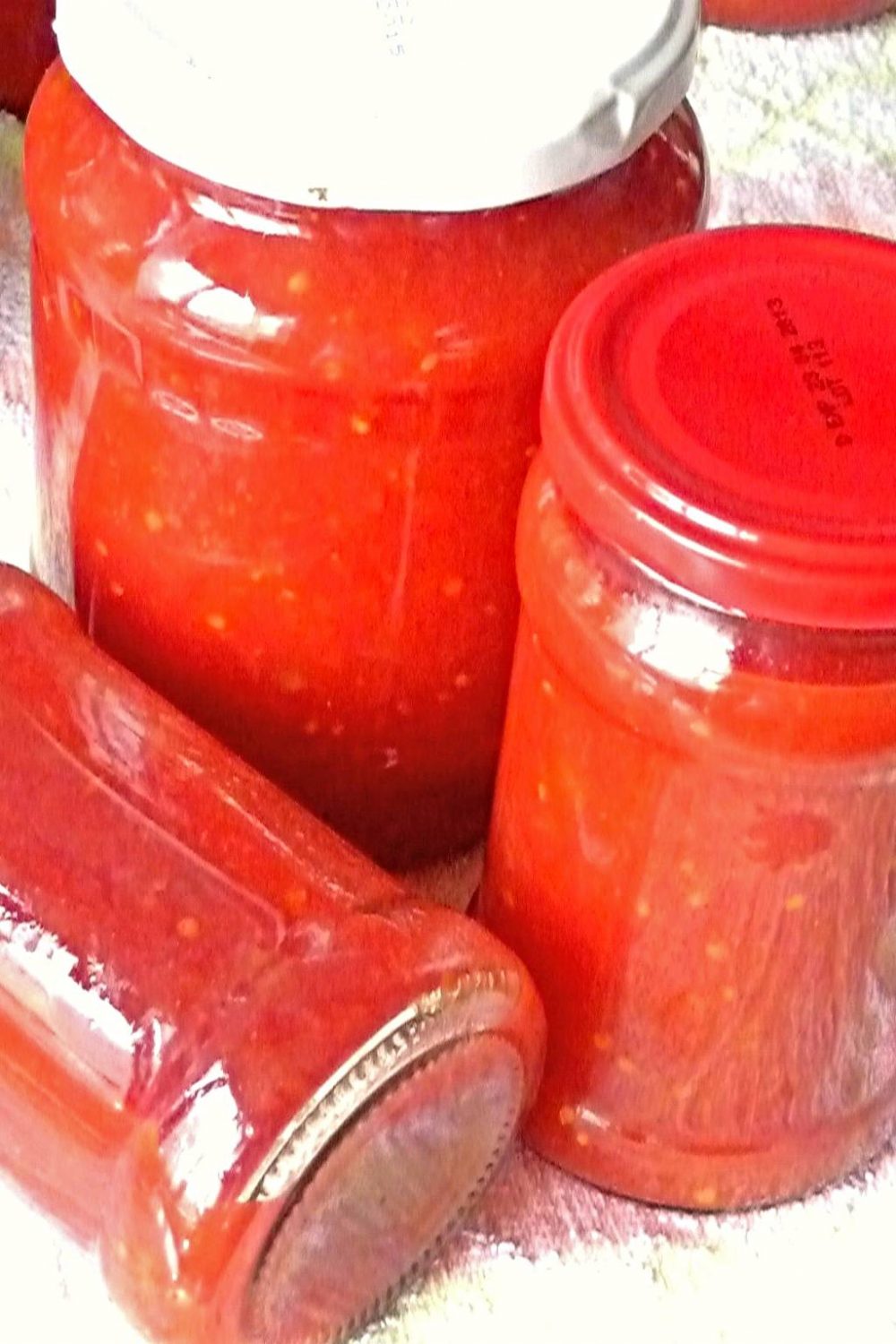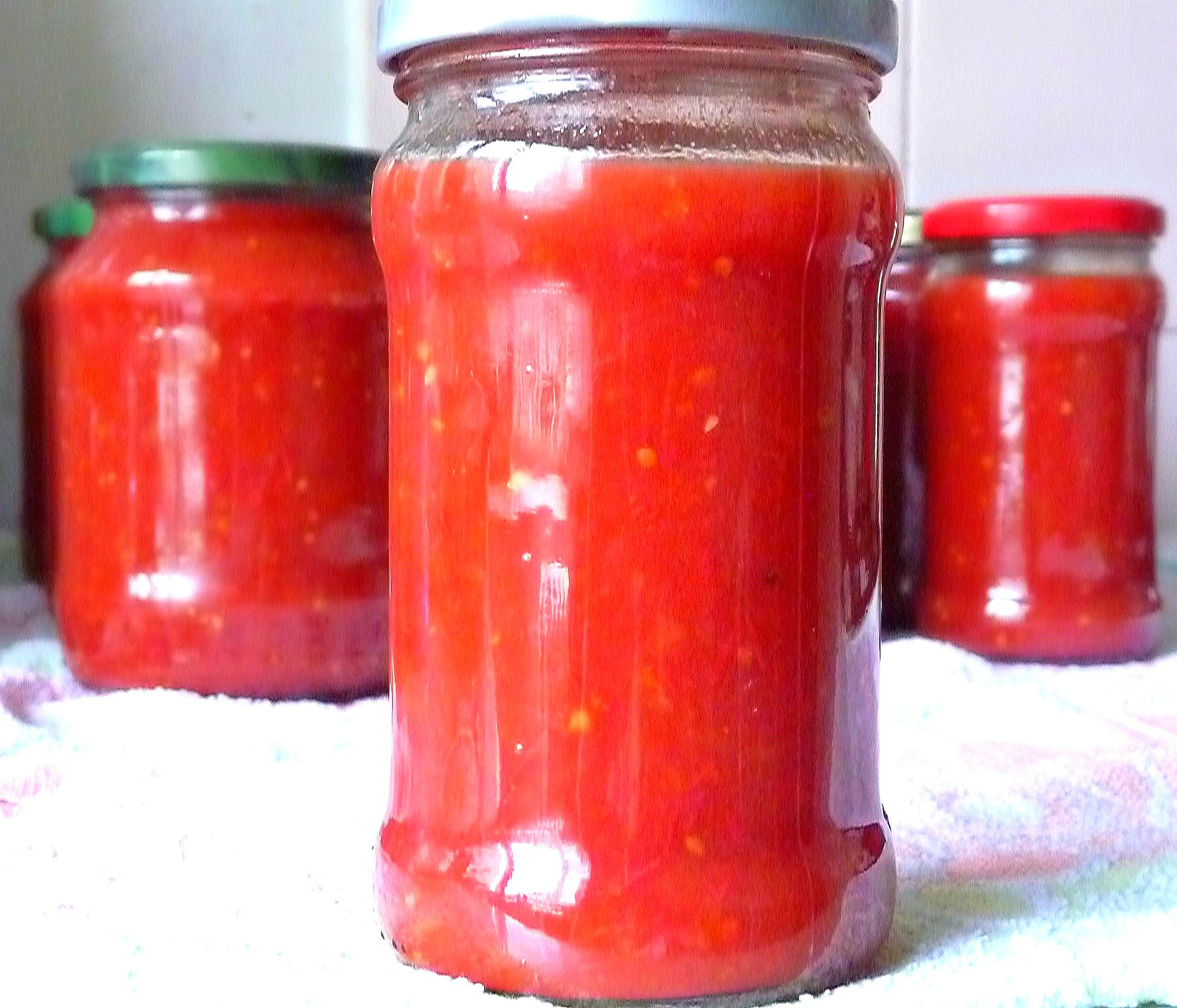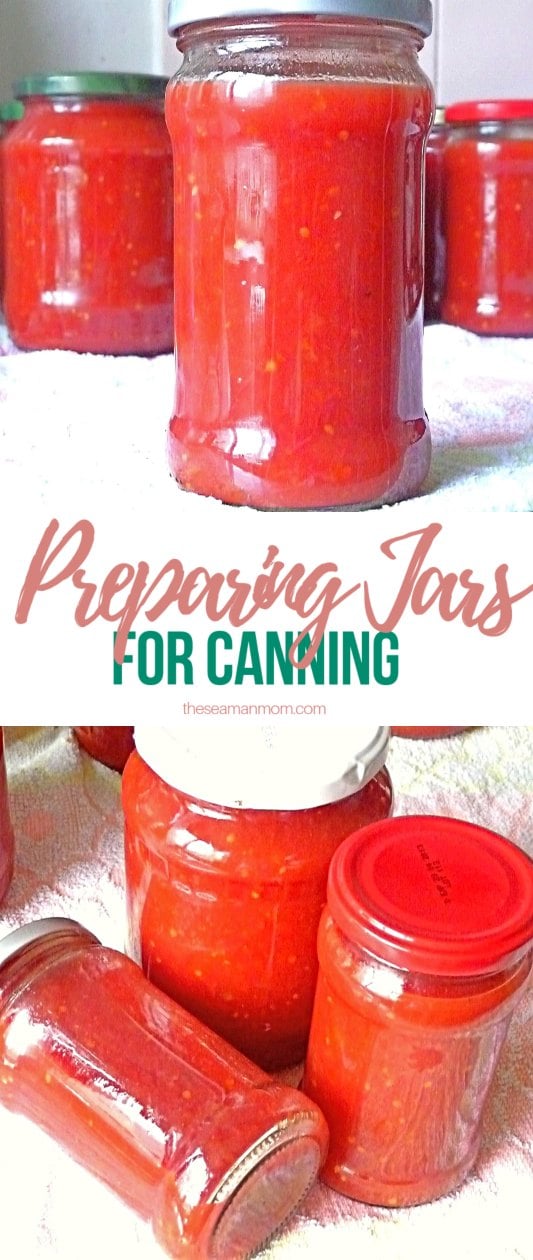How to prepare jars and bottles for canning
Forget about the mystique surrounding home canning! Here you’ll find everything you need to know on preparing jars for canning!
How To Prepare Jars For Canning

Canning season is getting closer (for some it already started!) and if you are a newbie homemaker you might find that scary. There’s no need to, though! Home canning is super easy! The whole secret stays in preparing jars for canning properly!
I’ve always been impressed with how amazing my mom was at all this stuff! Preparing jars for canning, sterilising jars or/and bottles, picking the perfect fruit and vegetables, meticulously cleaning all for hours and hours and then putting even more hours into the actual canning. I could see why the whole process would make a chicken like myself promise she’ll never ever do this stuff, no matter what!
Turns out I was wrong! Canning is fun and it could easily turn into a passion as it did for my mom. I’ll show you the super easy steps for preparing jars for canning, sterilizing canning jars and sealing canning jars so you can enjoy your delicious homemade foods for months!
Need more canning ideas?
With canning there are just three simple steps you need to follow before making the actual food that goes into the jars: preparing the jars, sterilizing and sealing them.
Preparing jars for canning
One of the most important steps to ensure the canned vegetables and fruit are perfectly preserved is learning how to prepare jars for canning. Why the need for proper cleaning and sterilization? Because our hard work might be affected by germs, bacteria, molds, fungi etc that can’t be removed by simply washing the jars and bottles. So sterilising glass jars is a super important part you don’t want to skip!
And if you thought new jars are safe, you are wrong! New canning jars out of the box are not sterile. Being in a box or covered in plastic wrap doesn’t equal a sterile environment. It’s better to choose jars that are not broken, cracked or chipped and have a lid that closes perfectly. If air enters the jar it will most certainly damage the canned content.
Sterilizing canning jars
In order to properly sterilize glass jars or bottles you need to boil them and the process can be done before or after being filled with vegetable stews, jam, pickles, syrups etc. Or if you’re feeling extra cautious, you can do it before AND after. In both cases, they should previously be washed thoroughly with warm water and dish washing detergent and rinsed in several waters.
Sealing canning jars
I personally prefer doing both steps for two simple reasons: by boiling the jars before filling them, I make sure the jars are sterilized and safe from any germs and other disgusting stuff, before I add the food that I’m going to eat. Second, boiling them again after filling will help the lids sealing tight, ensuring no air will enter and spoil my hard work.
There’s also an alternative method to seal jars after they’ve been filled with food and that involves using an oven method I’ll be highlighting below in the instructions.
Preparing jars for canning

Materials:
- glass jars or bottles with lids
- large pot, able to fit your jars and bottles and that is a little higher than your jars or bottles
- large baking sheet – optional
- thick clean towels
Directions:
Step 1 – Preparing for canning
- Thoroughly clean your jars and bottles with warm water and soap and rinse well.
- Check each jar and bottle for cracks and damages and make sure the lids are sealing tight
- Pick a large heat resistant pot or deep tray (if you have a canner pot, that’s awesome!) and lay a clean towel on the bottom. Place the jars in and cover them with water.
- To avoid breaking during boiling, you could wrap each jar or bottle in a kitchen towel, before adding them to the pot.
Step 2 – Sterilizing the jars/bottles before filling
- Insert the pot in the oven and bake at 320-360 F (no need to pre heat the oven), bring the water to a boil and let the jars boil for 10 minutes. You can do the same process on a stove, but in this case use a lid to cover the pot.
- Then place the jars on a clean towel upside down and leave to drain and dry. They are ready to use when completely dry. Use immediately! If you’re not quite ready to proceed with your canning, you can keep the jars in the hot water for up to 45 minutes but if you wait longer, you’ll need to sterilize them again.
Step 3 – Sterilizing jars after filling
- After thoroughly cleaning and rinsing the jars you can fill them with food.
- To sterilize the jars and bottles after they have been filled with food, they must be almost hermetically sealed.
- Fill jars until full. The less air in the jar, less likely to ferment later on.
- Put the lids on and seal as tight as you can.
- Place a thick towel at the bottom of a pot with high edges then add the jars or bottles.
- To make sure the jars won’t crack during boiling you could wrap each in a kitchen towel before adding to the pot.
- Add water as much as the pot can hold but not over the lids, then place the pot in the oven and bake at 320-360 F, allowing the water to boil for 10-15 minutes. Do not boil the lids as this will damage their adhesive rings so make sure to keep water level below the lids! Keep an eye on the jars and add water if needed.
Step 4 – Sealing jars
- If you decide to fill the jars before boiling them, you basically covered the sealing process too. Boiling the jars after they’ve been filled also acts like sealing so this method is a time saver. Allow the jars to cool in the pot before removing and store in a cool place. If you know your pantry gets quite warm, I recommend adding half aspirin pill in each jar before sealing. Plays as preservative.
- There’s another method that doesn’t require boiling. Sterilize jars as above, fill with food, seal the lids tight and turn jars upside down. Sit filled jars in the oven on a large baking sheet and turn the oven on to the lowest temperature, baking the jars for 20 minutes. Turn off oven and leave jars in the oven over night to cool slowly.
If you liked my tips on home canning, please let me know in the comments below and don’t forget to rate this tutorial!
Pin to save for later

Similar posts you might like:
Article may contain Amazon & affiliate links. As an Amazon Associate I earn from qualifying purchases at no additional cost to you.



Can you use recycled jam jars and not the specializes canning jars?
You can. Just make sure the lids are in good condition and the jars are sealed properly.
Hi Petro
I have just used your recipie for pickling cucumbers. After a continuous abundance grown in the garden I am so happy nothing is getting wasted. Your recepie was very simple to follow and I cannot wait to try my pickled cucumbers when they are ready.
Thank you so much.
Yvonne
great information! thanks.
I just want you to know that I had heard of canning in random jars and just couldn’t find any instructions. I have recently moved and have been replacing my jars all over again. But I did recently get a gasketless pressure canner at a yard sale. I will be trying these methods. Thanks for the information I’ve been looking for.
do you have to buy canning jars or can you reuse jars ( such as pickle or sauce jars) that you have at home
Hi Brinda. You can reuse them as long as both the jars and the lids are in good shape.